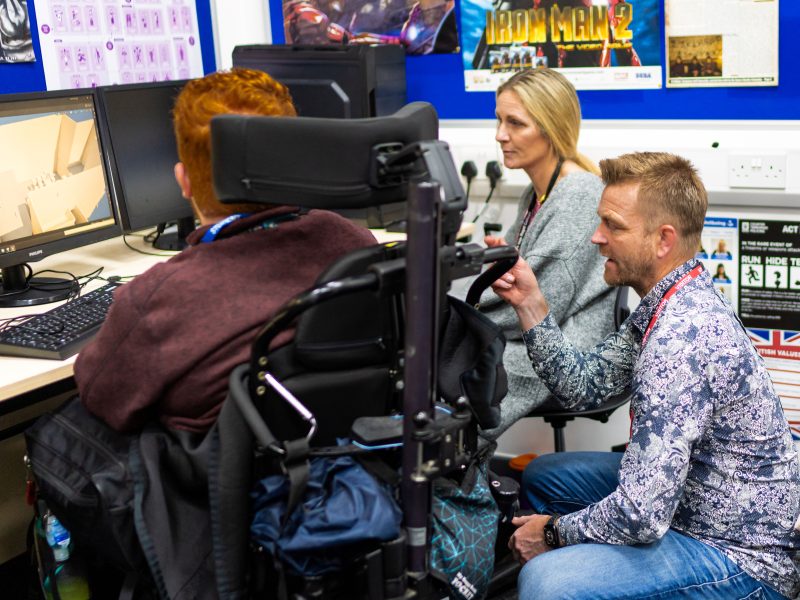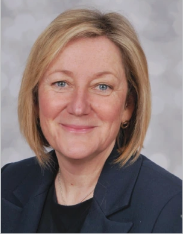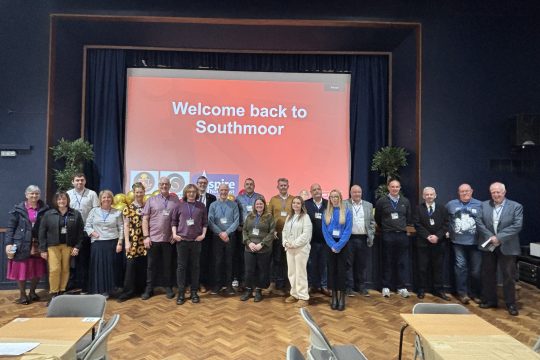“I’m excited about what the changes to the Gatsby Benchmarks will mean for SEND students in mainstream settings"
How should mainstream secondary schools tailor careers guidance provision for students with SEND? Drawing on the updated Gatsby Benchmarks, Vinette Hoffman-Gibbs, Assistant Headteacher with responsibility for inclusion, discusses the approach taken at the Radcliffe School in Milton Keynes. Vinette Hoffman-GibbsAll young people deserve the very best career guidance, whatever their background, interests or ambitions, because navigating the future can be tricky for us all.
At the Radcliffe School, we are proud of our inclusive ethos and the support we offer to meet the needs of each of our young people. In a community school like ours, which draws students from a wide socio-economic demographic, careers guidance is a lifeline for many.
For those children at risk of becoming NEET, exposing them to different options is vital. This can be done via meaningful employer encounters including talks, employer visits, and opportunities to experience working in different fields.
One such example was provided by the University of Buckingham where students had the opportunity to operate a robotic dog, Spot, and get a hands-on experience of AI. These types of experiences can make young people realise that there is a whole world out there and that they can have a place in it.

Good careers guidance can raise aspirations, open young people’s eyes to fresh experiences and ideas, and help them to overcome misconceptions they might have picked up from their family or culture.
It can be a motivating tool to get young people to engage, focus and learn. It helps them to see the point of school, showing them what is possible.
Good careers guidance is especially vital for those young people with SEND. Many young people with additional needs attend mainstream schools and the vast majority do not have an Education, Health and Care Plan (EHCP).
As assistant headteacher and lead for inclusion, I work closely with the careers leader and other key staff to ensure all of our students access a careers programme that is tailored to their individual needs.
What this looks like in practice varies from learner to learner. Sometimes it requires thinking about different, adapted or additional information and support that young people or their parents and carers may need. This could be ensuring they know about the Local Offer.

What has worked well for us is a progressive programme to develop knowledge, skills and behaviours to ensure students can get the most out of the opportunities they access.
It may also involve adapting delivery, such as the timing and structure of personal guidance meetings or supported visits to local colleges and training providers.
It is also important that an employer understands what they need to do to host a student with SEND. The careers leader will always work with the SENCO and other support staff to ensure the employer is properly supported with this, which may involve visits to school and the sharing of resources and strategies that can be used to support students in the workplace.
Updated Gatsby Benchmarks
The importance of designing activities that meet individual needs in these sorts of ways is re-emphasised in the recently updated Gatsby Benchmarks.
Woven throughout the updated benchmarks are amendments that make the framework even more inclusive and place careers at the heart of education, with specific responsibilities for governors, headteachers and senior leaders, as well as career leaders and careers advisors.
They recognise the importance of a whole school approach, of making careers part of everyone’s responsibility and of sequencing and tailoring careers programmes.
For me, the new and expanded definition of “meaningful” in Benchmarks 5, 6 and 7 (meaningful encounters and experiences) encourages schools to determine the best way to set up, facilitate and manage encounters and experiences of the workplace, based on the needs of young people and for everyone to be clear about the objectives and purpose.
Information must be provided about all potential pathways and career leaders must work closely with SENCOs, young people, and their parents and carers to prepare the young person for their next steps with the bespoke support they may need to make positive transitions.
Updates to Benchmark 3 consider young people’s concerns about any barriers to their career development and the importance of being able to see a diverse range of role models.
You need to get the buy-in of all the different subject department leads to ensure careers is embedded within each curriculum plan and not just added as an after-thought.
To do this, staff may need support, and it is highlighted in Benchmark 4 that careers should form part of the school’s on-going staff development programme, not just for teachers, but for all staff who support students. To this end, the Careers and Enterprise Company, a national body for careers education, offers a range of free CPD modules and resources.

As well as being excited about the changes, I’m equally pleased with the things that have stayed the same. For example, the continued recognition that some aspects of some benchmarks may be implemented in a different way for students with SEND in mainstream settings.
It is great to see acknowledgement that the professionals who work with these young people every day are the experts and best placed to adapt their career guidance activity to the different needs of their students.
A great starting point for reviewing your school’s current provision is the Careers & Enterprise Company’s Careers Impact Review, which helps colleagues identify strengths, engage senior leaders, and implement best practices.
There are many examples of excellent practice of this in schools up and down the country in the Good Career Guidance: The Next Ten Years report.
The report, which sets out the updated Gatsby Benchmarks in full, encourages us all to keep being passionate about delivering the highest quality careers guidance for each and every young person in our schools and colleges. At the Radcliffe School we are looking forward to continuing to make this a reality.
More on ensuring inclusion and impact for each and every young person
Read about the updated Benchmark 3: Addressing the Needs of Each Young Person here and in section 4 of the Good Career Guidance: The Next Ten Years report.




